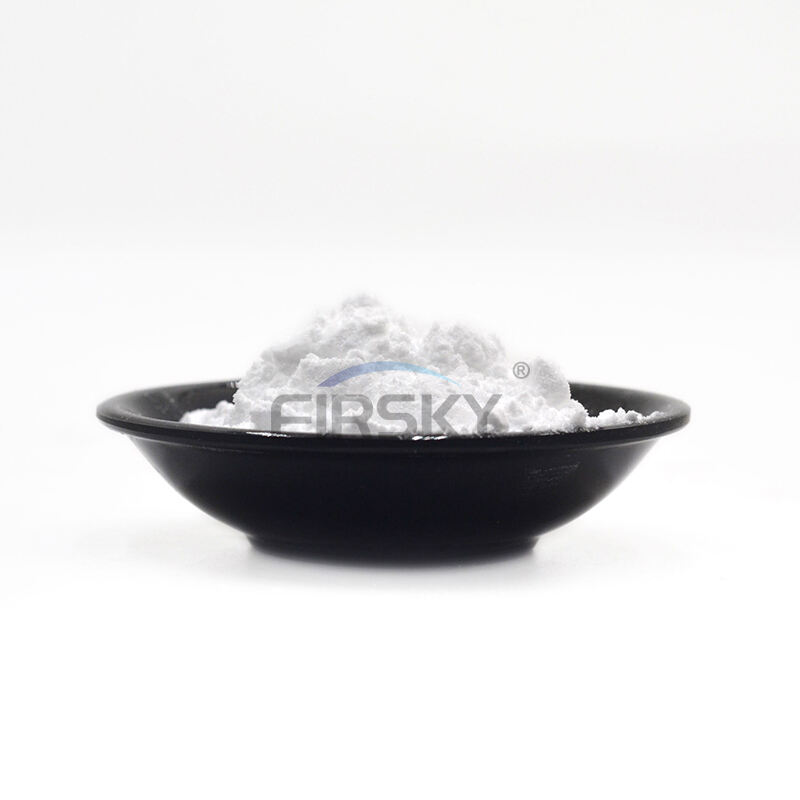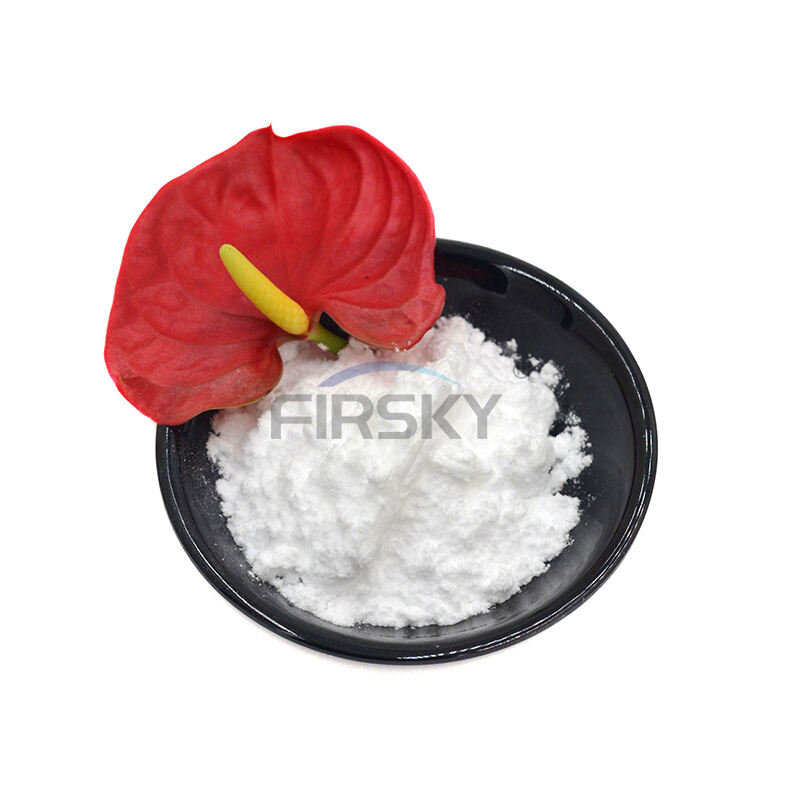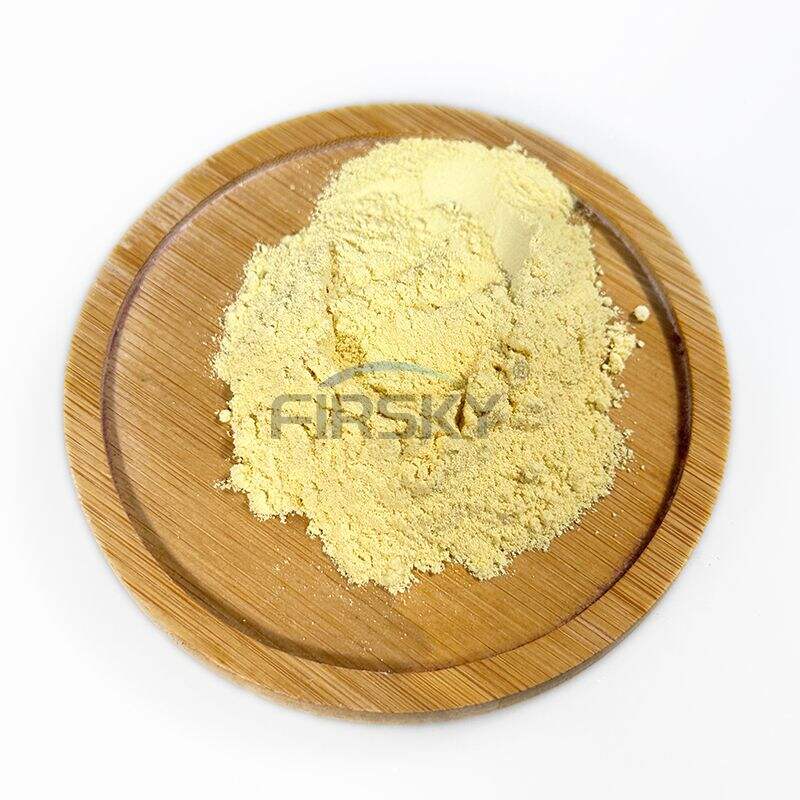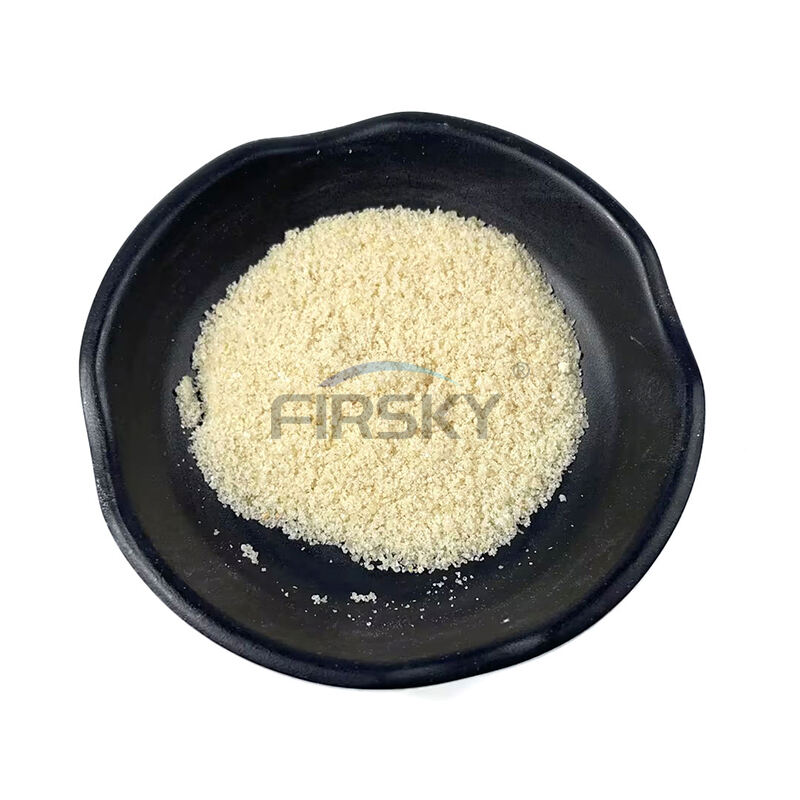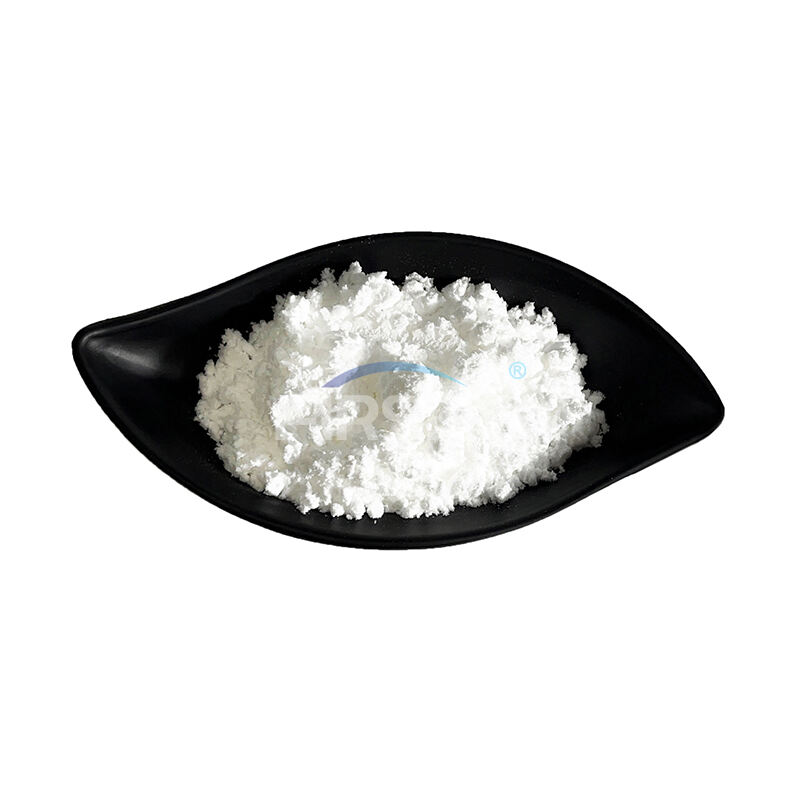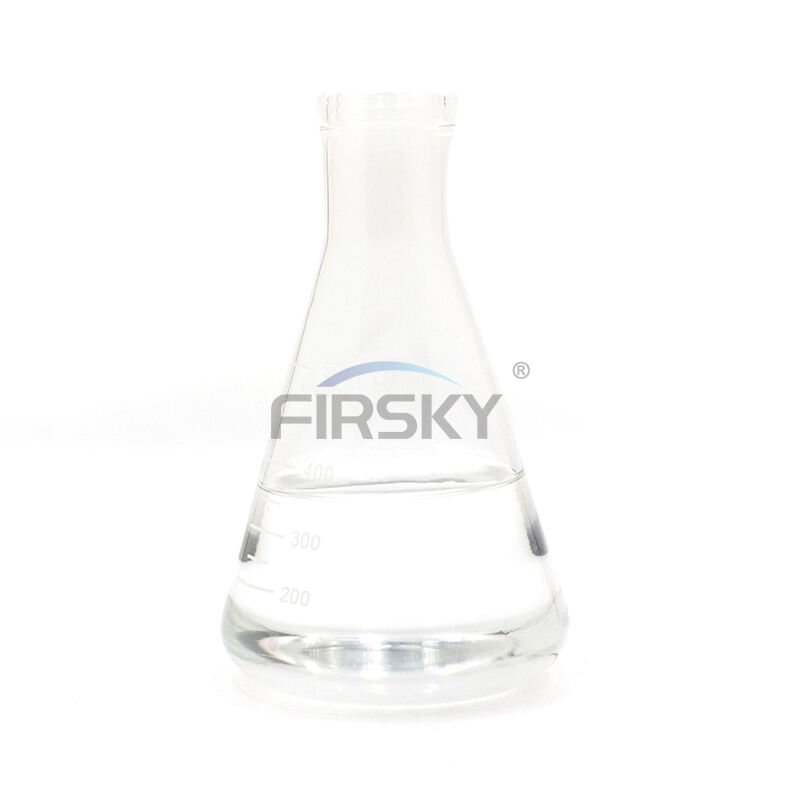- Overview
- Description
- Application
- Specifications
- Advantage
- Inquiry
- Related Products
| Place of Origin: | China |
| Brand Name: | FIRSKY |
| Model Number: | 1KG |
| Certification: | SGS,ISO 9001 |
| Purity: | 99% |
| Packaging Details: | Custom aluminum packages,paper boxes,wooden cartons |
| Delivery Time: | Tracks available within 3-5 working days after payment received |
| Payment Terms: | Escrow,Bank transfer,Western Union,Money Gram,Wise,Crypto currencies |
| Supply Ability: | 2000T/Mouth |
Description
L-tert-Leucine, also known as tert-Leucine or (S)-2-Amino-3,3-dimethylbutanoic acid, is an amino acid with a unique chemical structure. It is an isomer of the naturally occurring amino acid L-leucine, differing in the position of the methyl group on the carbon atom adjacent to the amino group.
Here are some key points about L-tert-Leucine:
Chemical Structure: L-tert-Leucine has the molecular formula C7H15NO2 and a molecular weight of 145.20 g/mol. Its chemical structure consists of a central alpha-amino group (NH2) bonded to a carbon atom (Cα), which is further bonded to three methyl groups (CH3) and a carboxyl group (COOH).
Chirality: Like other amino acids, L-tert-Leucine is a chiral molecule, meaning it has a non-superimposable mirror image. The "L" prefix in its name denotes that it belongs to the L-stereoisomer series, which is the type of amino acids commonly found in proteins.
Occurrence: L-tert-Leucine is not a standard amino acid found in proteins. It is a synthetic or unnatural amino acid that is often used in peptide synthesis and pharmaceutical research.
Applications: Due to its unique structure, L-tert-Leucine is commonly used as a building block in peptide synthesis and in the design of novel peptide-based drugs or pharmaceutical compounds. It can be incorporated into peptides to modify their properties or enhance their stability.
Safety: As a synthetic amino acid, L-tert-Leucine is not naturally occurring in the human body, and its safety and biological effects may differ from standard amino acids. Studies and research on L-tert-Leucine are conducted to understand its impact on health and potential applications in the medical and pharmaceutical fields.
It's important to note that the information provided here is based on my knowledge up to September 2021, and there may have been new developments or research on L-tert-Leucine since that time. As with any chemical compound, proper handling and application, along with adherence to safety guidelines, are crucial when working with L-tert-Leucine in laboratory settings or for research purposes.
Application
L-tert-Leucine is a synthetic or unnatural amino acid and does not have any established uses in clinical or therapeutic applications. However, it does have some important uses in the field of chemistry and pharmaceutical research:
Peptide Synthesis: L-tert-Leucine is often used as a building block in peptide synthesis. Peptides are short chains of amino acids linked together, and they play crucial roles in various biological processes. Researchers utilize L-tert-Leucine to incorporate it into peptides to modify their properties or enhance their stability.
Drug Design: In pharmaceutical research, L-tert-Leucine can be used in the design of novel peptide-based drugs or pharmaceutical compounds. The introduction of L-tert-Leucine into peptides can alter their bioactivity, potency, or specificity, making them potential candidates for drug development.
Structure-Activity Relationship Studies: L-tert-Leucine may be utilized in structure-activity relationship (SAR) studies, where researchers investigate the relationship between the chemical structure of a compound and its biological activity. By incorporating L-tert-Leucine into peptide analogs, scientists can explore how different structural changes impact the peptide's function.
Peptide Mimetics: L-tert-Leucine can be used to design peptide mimetics, which are synthetic compounds that mimic the structure and function of naturally occurring peptides. Peptide mimetics may offer advantages over natural peptides, such as improved stability or bioavailability.
Research Tool: L-tert-Leucine serves as a valuable research tool for studying the structure and function of peptides. It allows researchers to investigate how specific modifications to peptide sequences affect their behavior and interactions with other molecules.
It's important to emphasize that L-tert-Leucine is not a naturally occurring amino acid in proteins, and its use is primarily limited to research and laboratory settings. It is not used for medical or therapeutic purposes in clinical practice. Researchers and scientists must handle L-tert-Leucine with appropriate safety measures, following laboratory protocols and guidelines.
Specifications
| Product Name: | L-tert-Leucine |
| Synonyms: | (S)-(+)-LEUCINE;RARECHEM AB PP 3754;L-A-AMINO-G-METHYL VALERIC ACID;L-A-AMINOISOCAPROIC ACID;L-2-AMINO-4-METHYLVALERIC ACID;LEUCINE, L-;LEU;LEUCINE |
| CAS NO: | 20859-02-3 |
| EINECS: | 424-750-7 |
| Molecular Formula: | C6H13NO2 |
| Molecular Weight: | 131.17 |
| Melting Point: | ≥300 °C (lit.) |
| Boiling Point: | / |
| Density: | 1.1720 (estimate) |
| Appearance: | White powder |
| Storage: | Keep in dark place,Sealed in dry,Room Temperature |
Advantage
1.Firsky (Wuhan) keeps working to provide customers with high-quality products steadily. We have established a sound internal quality management system and are constantly striving to improve quality, reduce deviation and waste.
2.If you have any questions, please feel free to ask questions, we will reply to your questions within 48 hours.
3.If you have any questions after receiving the goods, please feel free to contact us. If the loss is caused by us, we guarantee 100% compensation.


